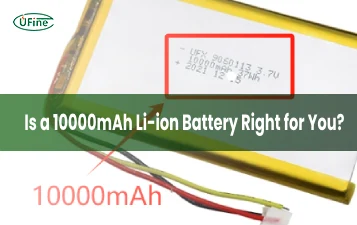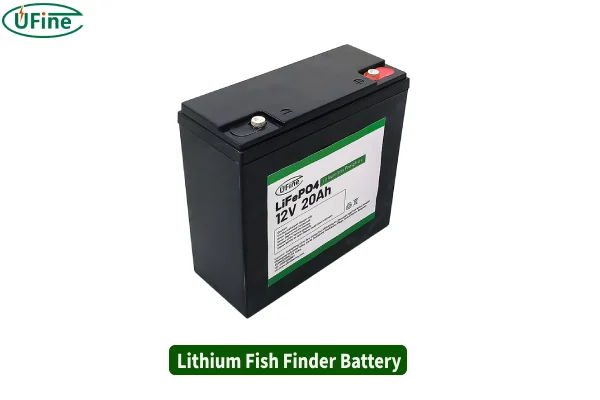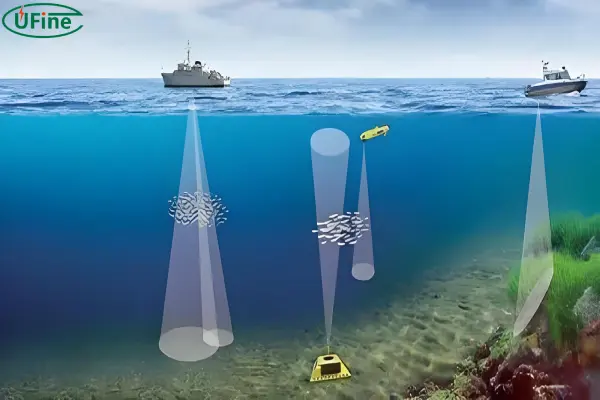Fishing is a beloved pastime for many, and having the right gear can make all the difference. One essential piece of equipment for modern anglers is the fish finder. This handy device helps you locate fish underwater, making your trips more productive and enjoyable. But to get the most out of your fish finder, you need a reliable battery. In this guide, we’ll dive deep into everything you need to know about fish finder batteries. From understanding the different types to knowing how to connect and charge them, we’ll cover it all. So, let’s get started!
Part 1. Fish finder battery overview
Fish finders are typically powered by portable batteries. These batteries provide the necessary energy to run the device, ensuring it performs well throughout your fishing trip. Without a good battery, even the best fish finder won’t be of much use. It’s like having a car with no fuel – you need both to get moving.
Choosing the right battery for your fish finder is crucial for several reasons. First and foremost, the right battery ensures your fish finder operates efficiently. Imagine being out on the water, ready to catch some fish, and suddenly your fish finder dies. Frustrating, right? That’s why a reliable battery is essential. Moreover, the right battery can affect the overall lifespan of your fish finder. A good battery will provide consistent power, which helps maintain the device’s performance over time. Lastly, it can save you money. A high-quality battery might cost more upfront, but it will last longer and reduce the need for frequent replacements.
Part 2. Fish finder battery types
There are several types of batteries you can use for your fish finder. Each type has its own set of advantages and disadvantages. Let’s take a closer look at the most common options:
1. Sealed Lead Acid (SLA) Fish Finder Batteries
Advantages:
- Affordable: SLA batteries are generally less expensive than other types.
- Widely Available: You can find them in most electronics or automotive stores.
Disadvantages:
- Heavy: These batteries are quite heavy, which can be a drawback if you need to carry them around.
- Shorter Lifespan: They don’t last as long as other types, especially if not maintained properly.
2. Lithium-ion Fish Finder Batteries
Advantages:
- Lightweight: Lithium-ion batteries are much lighter than SLA batteries, making them easier to transport.
- Long-lasting: They have a longer lifespan, often lasting several years with proper care.
- Fast Charging: These batteries charge quickly, so you spend less time waiting and more time fishing.
Disadvantages:
Expensive: They cost more upfront compared to other types.
3. Nickel Metal Hydride (NiMH) Fish Finder Batteries
Advantages:
- Environmentally Friendly: NiMH batteries are more eco-friendly than SLA batteries.
- Moderate Lifespan: They offer a decent lifespan, making them a good middle-ground option.
Disadvantages:
- Moderate Cost: They are more expensive than SLA batteries but cheaper than lithium-ion batteries.
- Limited Availability: Not as widely available as SLA or lithium-ion batteries.
When choosing a fish finder battery, you’ll need to consider factors like weight, lifespan, and cost. For many anglers, lithium-ion batteries are the best choice despite their higher price. They offer a great balance of portability, durability, and performance.
Part 3. Fish finder battery voltage
Most fish finders operate on 12V batteries. This is a standard voltage for many types of portable electronics. Using a battery with the correct voltage is crucial because it ensures your fish finder operates efficiently and safely. If you use a battery with too high or too low voltage, you risk damaging your device. Always double-check the voltage requirements of your fish finder before purchasing a battery.
Part 4. Common capacity of fish finder battery
When it comes to capacity, fish finder batteries commonly range from 7 Ah to 20 Ah. The capacity you need depends on how long you plan to use the fish finder and how much power it consumes. For example, if you use a basic fish finder for a few hours, a battery with a capacity of around 7 Ah should be enough. However, if you have a more advanced fish finder with additional features like GPS and plan to be out for an entire day, you might need a battery with a capacity closer to 20 Ah.
Part 5. How long does a fish finder battery last?
The lifespan of a fish finder battery depends on several factors, including the type of battery, how often it’s used, and how well it’s maintained. SLA batteries typically last 1-2 years. They require regular maintenance, such as keeping them charged and avoiding deep discharges, to maximize their lifespan. On the other hand, lithium-ion batteries can last up to 5 years or more with proper care. They are more durable and don’t require as much maintenance as SLA batteries. Regularly check your battery’s condition and replace it when you notice a significant decrease in performance.
Part 6. How to connect fish finder to battery?
Connecting your fish finder to the battery is a straightforward process. Here’s a step-by-step guide to help you do it correctly:
Step-by-Step Guide
- Gather Materials: You’ll need your fish finder, battery, and connectors. Some fish finders come with the necessary connectors, but you can purchase them separately if needed.
- Locate Terminals: Find the positive and negative terminals on both the battery and the fish finder. The positive terminal is usually marked with a “+” sign, and the negative terminal with a “-” sign.
- Connect Wires: Attach the positive wire (usually red) to the positive terminal on the battery. Then, attach the negative wire (usually black) to the negative terminal.
- Secure Connections: Ensure all connections are tight and secure. Loose connections can cause power interruptions or even damage your fish finder.
- Power On: Turn on your fish finder to check if it’s working properly. If it doesn’t power on, double-check your connections and make sure the battery is charged.
Part 8. What charger does the fish finder battery use?
Part Just like batteries, there are different types of chargers available for fish finder batteries. Choosing the right charger is essential for maintaining your battery’s health and ensuring it charges efficiently.
Charger Types
- Standard Chargers: These are the most basic type of chargers. They charge the battery at a slow, steady rate, which is safe but can take a long time.
- Smart Chargers: Smart chargers are more advanced. They monitor the battery’s condition and adjust the charging rate accordingly. This prevents overcharging and prolongs the battery’s life. They are faster than standard chargers.
- Solar Chargers: Solar chargers are an eco-friendly option. They use solar panels to convert sunlight into electricity, which charges the battery. While they are a great backup option, they depend on weather conditions and are generally slower.
Comparison
For most anglers, smart chargers are the best option, especially if you use lithium-ion batteries. They charge quickly and help maintain the battery’s health. Standard chargers are suitable for SLA batteries, and solar chargers are a good backup option for all types of batteries, especially if you’ll be fishing in sunny conditions.
Part 9. Why choose lithium fish finder battery?
Lithium fish finder batteries have become increasingly popular and for good reasons. Here are some compelling benefits of choosing a lithium battery for your fish finder:
- Lightweight: One of the most significant advantages of lithium batteries is their lightweight nature. This makes them much easier to carry around, especially if you need to transport your gear over long distances.
- Long Lifespan: Lithium batteries have a much longer lifespan compared to SLA batteries. With proper care, a lithium battery can last up to five years or more, reducing the need for frequent replacements.
- Fast Charging: Lithium batteries charge much faster than their SLA counterparts. This means less downtime and more time out on the water.
- High Efficiency: These batteries provide a consistent power supply, ensuring your fish finder operates smoothly without sudden power drops.
- Eco-Friendly: Lithium batteries are more environmentally friendly due to their longer lifespan and better efficiency.
Part 10. Fish finder battery manufacturers
When it comes to high-quality fish finder batteries, choosing a reliable manufacturer is crucial. Ufine Battery is a top choice, known for its expertise in custom lithium batteries. Based in China, Ufine Battery specializes in creating a wide range of lithium battery products to meet various needs.
Ufine Battery offers a diverse selection of batteries, including:
- Lithium Polymer Batteries: Known for their lightweight and flexible design.
- 18650 Batteries: Popular for their high energy density and long cycle life.
- Lithium-Ion Batteries: Ideal for portable devices like fish finders.
- LiFePO4 Batteries: Known for their safety and stability.
- Cylindrical Batteries: Suitable for a variety of applications.
- Special Shape Batteries: Custom shapes to fit unique requirements.
- High Temperature Batteries: Designed to operate in extreme conditions.
- Low Temperature Batteries: Maintain performance in cold environments.
Ufine Battery can customize batteries to fit various sizes, voltages, capacities, and shapes, ensuring you get the perfect battery for your fish finder. Their commitment to quality and innovation makes them a trusted choice for anglers looking for reliable power solutions.
Choosing the right fish finder battery is essential for a successful and enjoyable fishing experience. With the right knowledge, you can select a battery that meets your needs and lasts a long time. Remember to consider factors like battery type, size, voltage, and capacity. And don’t forget to invest in a good charger to keep your battery in top condition. For high-quality custom batteries, Ufine Battery is a top choice.
Related Tags:
More Articles

10000mAh Battery Explained: How Long It Lasts, How It Works
A full guide on 10000mAh li-ion batteries, voltage, usage time, and tips. Discover how a 10000mAh battery works, how long it lasts, and how to choose.
10440 Battery Guide: Size, Voltage, Capacity, Uses & More
Understand 10440 batteries better—size, voltage, safety, and how they compare to AAA. Find the best fit for your high-performance devices.
White Stuff on Battery Terminals: A Step-by-Step Cleaning and Maintenance Guide
White stuff on battery terminals is corrosion. Learn how to clean it safely, prevent damage, and keep your battery running strong with simple steps.
Understanding How Glass Mat Batteries Work: Technology, Benefits, and Limitations
Glass mat batteries power cars, RVs, and solar systems. Learn how they work, their benefits, and what to consider before choosing one.
A Buyer’s Guide for AA Size Lithium Battery
Discover the power of AA size lithium batteries—types, voltage, capacity, and more! Learn how to choose the best one for your needs. Read now!






